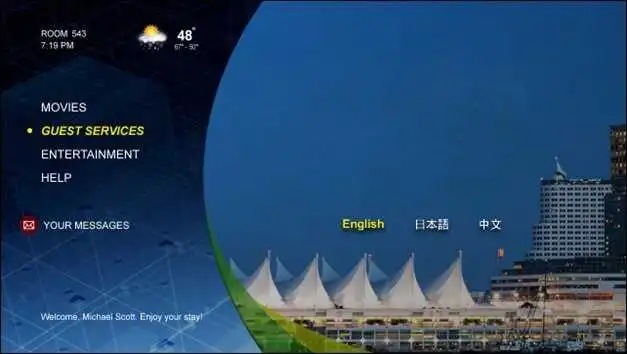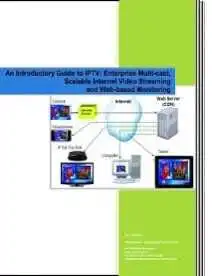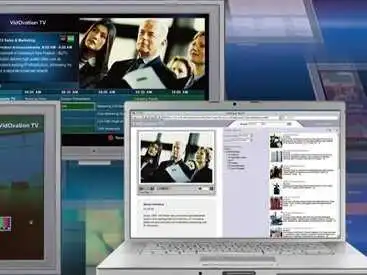
What is In-house, Enterprise IPTV, or VidOvation TV?
Internet Protocol television (IPTV) is a head-end system through which television and digital signage services are delivered using the Internet protocol suite over a packet-switched enterprise network instead of being delivered through traditional RF coax. IPTV is very cost-effective, flexible, and highly interactive. Services may be classified into one of the four groups below.
- Live television from DirecTV, Dish Network, cable, Over-The-Air TV, internal live feeds, studio feeds, and more.
- In-house and Off-campus Television Distribution is available. Dual Authentication is available with Active Directory integration to keep your video access secure.
- Time-shifted television, DVR, or Personal Video Recorder (PVR) is where the user can catch up on TV, replays a TV show, or replay a missed play in sports anywhere from seconds, hours, or days ago. The user can use start-over TV to watch a live show from the beginning.
- Video on demand (VOD): browse a catalog of videos from your internal content library and subscription options for premium Hollywood movies.
- Digital Signage is fully integrated with the VidOvation IPTV system or the integration of virtually any third-party digital signage or media player.
- Ensure legal compliance in your live IPTV system – Expect industry-approved Verimatrix & Pro:Idiom DRM & Encryption
- Alexa Smart Properties Integration with IPTV
All video and television signals stream over the enterprise network to Desktop PCs and MACs, Smartphones, Tablets, Smart TVs, Set-top boxes, TVs, Displays, and more.

17 Costly Mistakes to Avoid Deploying an IPTV & Digital Signage Headend

- No support for distribution to a desktop, laptop, smartphone, and tablet
- Getting stuck with one content provider (CATV/SAT) or without open architecture
- No support for Digital Rights Management or DRM
- Non-Friendly User Interface
- Not allowing integration of your own VOD content with your providers
- Not allowing for Your Own Live Video Distribution
- Limited or No Video Conferencing Functions
- Lacking Scalability, Security, and Flexibility
- No Support for Digital Signage and Advertising
- Plus 8 more Mistakes to Avoid

Download eBook Top 17 Mistakes when Deploying In-house or Enterprise IPTV

WHITE PAPERS

Nickelodeon and Viacom IPTV Case Study

Nickelodeon and Viacom IPTV Case Study

Nickelodeon and Viacom IPTV Case Study
DOWNLOAD OUR IPTV WEBINARS

IP TO THE CAMERA: COMPLETING THE BROADCAST CHAIN

IPTV NETWORKING PRESENTATIONS

ENTERPRISE, BROADCAST TV & STUDIOS

SPORTS

HOSPITALITY & ENTERTAINMENT

HEALTHCARE

GOVERNMENT & MILITARY

